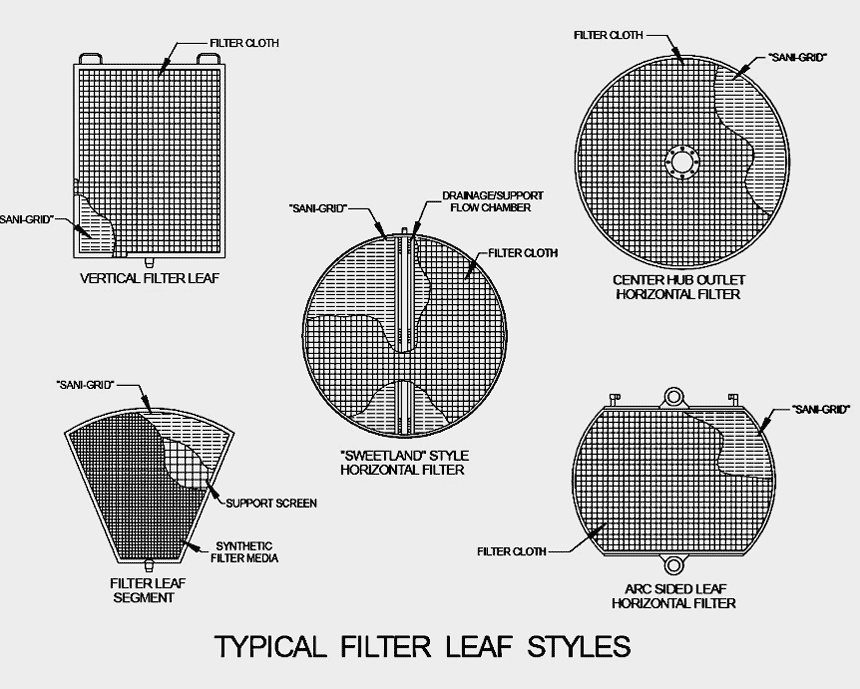Newark Wire News
Newark Wire News
How Does Filtration Work? The Basic Filtration Process

How does filtration work? Liquid-solid filtration is known as the separation of a single solid (or more) from the liquid process stream. Being a “unit operation,” it operates on the stream itself as it changes the stream’s characteristics. However, it’s the filter device that is responsible for such a procedure. Learn the entire filtration process below!
What The Filter Does
The filter itself accepts the incoming fluid (also known as influential liquor) and then discharges the liquor (also known as filtrate or effluent) clear of the contaminants that were previously in it. The contaminants will remain on the filtering surface inside of the filter, which will then either save the contaminants if valued, or discharge them to a designated disposal site.
As for the filter, it consists of a vessel that houses the surfaces of the internal filter. These are the filter components or surfaces that one should be concerned with, as the most common component being the “Filter Leaf”. The style, size, and type of filter leaves and filter are determined by several different factors. Some of the governing factors include pressure, temperature, process hydraulics, particulate level and type, the importance of filtrate or cake, and type of process. At Newark Wire Cloth we manufacture different styles of filter leaves such as vertical, horizontal, arc sided, “Sweetland” style, and center hub outlet style. You can see our filtration diagram of filter leaves here:

Filter Leaves & Filter Aids
Here, we will discuss the importance of such products in the context of the filter aids in filtration, the filter leaf, filtration examples, and how they filter.
Filter Leaves
The main objective of the filter leaf is to offer a screening surface in which the filter aid can be applied. Industries like food, chemical, beverage, and wastewater treatment are types of filtration in which they employ filter leaves in their filtration procedure. However, it’s the filter aid coating (on the metal mesh screen) that handles the retention process. To meet specifications, filter aids have this determined by the size and condition of the contaminant. The type of weave and retention of the filter cloth (on the leaves) is then determined by the specifications and type of filter aid.
With leaves being pre-coated, influent liquor will then be admitted to the filter. From here, the contaminant can be retained on the surface of the pre-coat as the clear liquor can pass through. All in all, this is the filter cycle.

Body Feeds
For several different filter operations, they might even utilize a body feed, which is known as a device that inserts small amounts of filter aid (during the filter cycle) to the influent.
A body feed separates contaminant particles and stops the particles from sealing off the surface of the pre-coat layer (which would prevent filtration flow.) The body feed will create an addition of porous material (continuously) between non-porous contaminants so that the influent can move around the contaminants.
The Filtration Cycle
The filtration cycle is the process of how filtration works. Below is a description of some steps in the filtration method.
- The batch of influent becomes exhausted.
- The resistance across the leaves increases due to the contaminant build-up, which makes filtration impractical.
- The build-up of body feed, contaminants, and pre-coat becomes too thick. This is oftentimes determined by the spacing between filter leaves.
Depending on the design and filter type, cleaning the leaves will vary. Having a properly designed filter leaf is crucial to assure the maximum filter cycle and even cake buildup. Some filters can have sluicing devices built internally to spray off the filter cake, as some can reverse the backwash to blow off the cake. However, many can be opened to be hosed down. Some equipment will utilize vibrators to aid in the removal of the cake.
Requirements for Filter Leaves
Since the filter leaf is a major part of the filtration process, it is responsible for:
– Retaining pre-coat media evenly on the surface.
– Allowing the uniform resistance to flow.
– Remain rigid and flat during operation.
Considering the information above, there’s a lot to consider when it comes to one’s filter. Thankfully, Newark Wire is here to help. Contact us today for further information!
